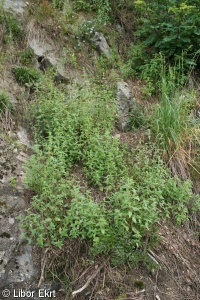U23 Temperate, lowland to montane siliceous scree
Siliceous screes and moraines of warm exposures, derived from a diversity of sedimentary, igneous and metamorphic rocks on the lower slopes of mountain ranges of the nemoral zone. Often the screes are mixed with fine soil. Vegetation can be completely lacking, but moss or lichen-dominated, species-poor communities can occur on rock surfaces and fine soil accummulated in crevices can support a variety of forb or fern-dominated vegetation. Siliceous screes in general have a lower species richness than calcareous screes but ferns can be diverse and luxuriant. Natural succession on more stable screes results in the development of scrub and woodland, not included here.
Chytrý M., Tichý L., Hennekens S.M., Knollová I., Janssen J.A.M., Rodwell J.S. … Schaminée J.H.J. (2020) EUNIS Habitat Classification: expert system, characteristic species combinations and distribution maps of European habitats. Applied Vegetation Science 23: 648–675. https://doi.org/10.1111/avsc.12519
Version 2025-10-03, https://doi.org/10.5281/zenodo.16895007.
For the official presentation of the EUNIS Habitat Classification from the European Environment Agency, please see: EUNIS Terrestrial Habitat Classification 2021. The FloraVeg.EU presentation may show modifications and partial updates to the habitat classification.

8.jpg)

6.jpg)
7.jpg)
3.jpg)
5.jpg)